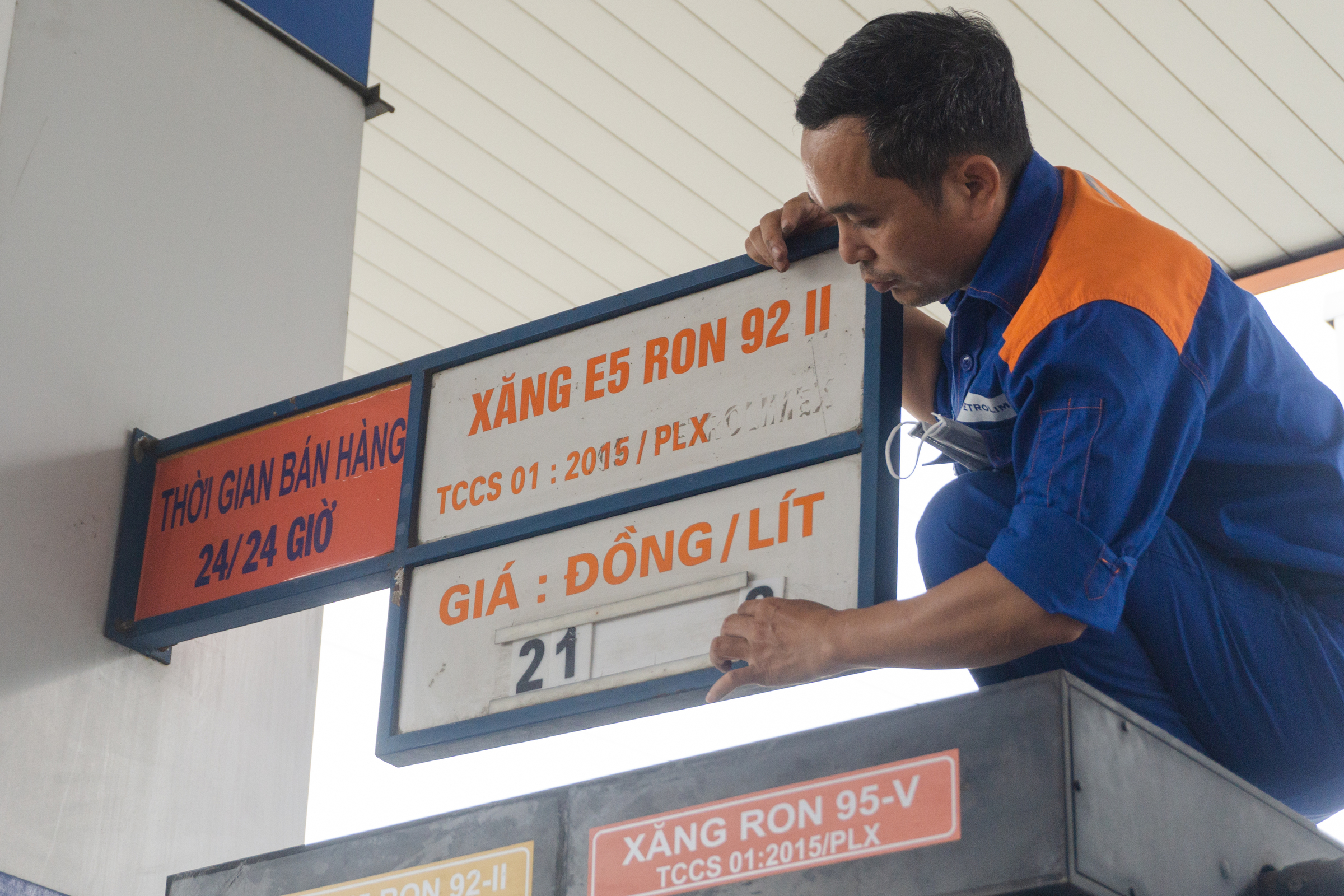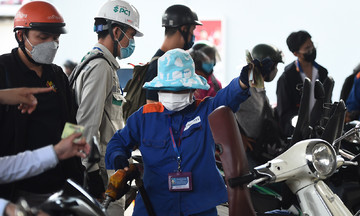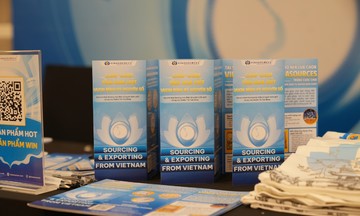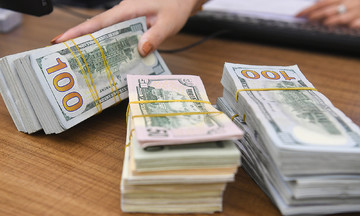Starting August 1st, Petrolimex and PVOIL will pilot E10 biofuel sales in Ho Chi Minh City, Hanoi, and Hai Phong to gauge consumer reaction. E10, a blend of 10% ethanol and 90% gasoline, is considered a key solution for reducing CO₂ emissions and boosting the ethanol industry.
Seven years ago, E5 biofuel held similar promise. Trinh Van Thang from Tay Mo ward, Hanoi, recalls using it when the government promoted it as a RON92 replacement. He believed it would reduce emissions and cost less.
However, in 2020, he switched back after upgrading to a newer car model recommended for RON95. Despite the higher price, he accepted the extra cost for smoother performance and better engine longevity. "A noisy or sluggish engine wastes fuel and leads to repairs," he explained.
Thang isn't alone. Many have abandoned E5. Two years ago, a company with five gas stations in Binh Duong stopped selling E5 due to low demand.
"A tank of RON95 sells out in three days, while E5 takes half a month," a company representative said. When E5 launched widely in 2018, sales reached 35-40% of RON95. But within a few years, this declined. By the end of 2023, E5 represented only 10% of their gasoline sales. Inventory costs, tied-up capital, and storage challenges forced them to discontinue it.
Reports indicate E5 consumption exceeds 50% compared to gasoline only in rural areas with lower incomes and older motorcycles. In contrast, E5 consumption in major cities with higher incomes and newer vehicles is low, sometimes only 15%.
 |
An employee at a gas station on Phan Xich Long Street, Phu Nhuan District, Ho Chi Minh City adjusts fuel prices. Photo: Thanh Loc |
An employee at a gas station on Phan Xich Long Street, Phu Nhuan District, Ho Chi Minh City adjusts fuel prices. Photo: Thanh Loc
Experts believe expanding E10 sales requires addressing lessons learned from E5.
Dao Duy Anh, Deputy Director of the Department of Innovation, Green Transition and Industrial Promotion (Ministry of Industry and Trade), explained the declining E5 demand. He noted it's based on RON92, suitable over a decade ago, while most modern vehicles are designed for higher-octane fuel (RON95).
Insufficient incentives (taxes, fees, operating mechanisms) have disincentivized ethanol producers, blenders, and retailers. Inconsistent and uncoordinated implementation in some areas has led to uneven results. Some consumers remain skeptical about E10's quality, despite proven safety.
A Ho Chi Minh City retailer hopes for improvements in E10, such as enhanced engine performance and fuel economy, increased shelf life, competitive pricing, clearer communication of environmental and economic benefits, and consistent distribution infrastructure to maintain quality.
E10 requires infrastructure, technology, and dedicated storage tanks for ethanol, along with close coordination with refineries. Tran Ngoc Nam, Board Member and Deputy General Director of Petrolimex, urged the Ministry of Industry and Trade to provide specific guidance on implementation, enabling proactive investment and system upgrades. He also suggested adjusting technical standards in the current TCVN to align with international gasoline sources and regional standards.
Bui Ngoc Bao, Chairman of the Vietnam Petroleum Association, believes nationwide biofuel implementation requires at least six months of preparation. Regulators need to address market issues, product quality, fuel management, and E10 standards.
He also recommends streamlining regulations to ease business operations, citing overlapping procedures. "In developed countries, gasoline is subject to 3-4 mandatory technical standards, while in Vietnam, there are 35, managed by multiple ministries," he illustrated.
Giang Chan Tay, Director of Boi Ngoc Company (formerly a fuel retailer in Tra Vinh), supports the biofuel transition but believes the availability of alternatives like RON95 discourages consumer adoption. For E10 to become the national standard, he suggests decisive government action, perhaps even mandating a single fuel type.
"All supply, domestic and imported, should be blended with E10 from the start. Without alternatives, consumers will adapt without coercion," he said. This model eliminates the need for separate storage and pumping systems, preventing inventory issues, losses, and quality degradation – lessons learned from the E5 experience.
To alleviate concerns, he proposes a more accessible product name and less misleading information about E10 quality. "Clear, consistent policies without alternatives are key. The market will adjust," he stated.
The Ministry of Industry and Trade is developing tax and environmental fee incentives, adjusting base gasoline standards, and ensuring vehicle compatibility for blending.
Vietnam is preparing for a nationwide transition to E10 by early 2026. Many countries have mandated biofuel use. Trinh Van Thang will try E10 if the quality and price are right. The Binh Duong company is also ready to distribute E10 to diversify its offerings. Both hope E10 avoids the fate of E5.
Thi Ha - Phuong Dung












